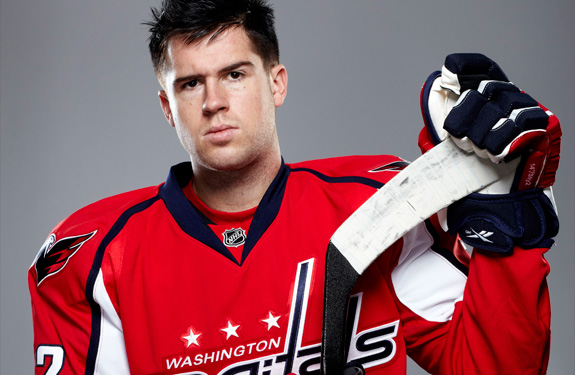The MWAH prospect countdown marches on with the first of what is suddenly a glut of left-handed relievers in the upper levels of the system just waiting for a chance to crack the big league bullpen.
Andrew Taylor
Position: Relief Pitcher Highest Level: Majors
Throws: Left Height: 6'2" Weight: 195 lbs.
Age: 26 Born: 8/18/86
2012 Season Stats
Double-A: 41.0 IP, 2-4, 2 SV, 4.61 ERA, 44 H, 14 BB, 4 HR, 39 SO, 0.79 GO/AO, 3.81 FIP, .309 BABIP
Triple-A: 18.0 IP, 1-0, 0 SV, 3.50 ERA, 16 H, 11 BB, 3 HR, 17 SO, 0.95 GO/AO, 5.64 FIP, .260 BABIP
Majors: 2.1 IP, 0-0, 0 SV, 11.57 ERA, 3 H, 4 BB, 0 HR, 0 SO, 0.50 GO/AO, 8.24 FIP, .300 BABIP
Fastball – B. Taylor’s fastball sits at 92-93 mph on the radar gun. For most relievers, this is a tad soft, but lefties tend to sit at 89-90 mph on average. So for a lefty, Taylor’s a hard thrower.
Offspeed Pitches – B. Taylor’s bread and butter as a reliever should come in his sweeping slider. It isn’t the “fall off the table” type displayed by most back end relievers, but the speed difference between his fastball (15+ mph) and it’s cut across the plate will make it extremely effective against lefties.
Control – D. Taylor had serious trouble finding the plate in his first stint in the majors, which judging from his numbers in the minors, isn’t out of the norm. Owns a career 5.5 BB/9.
Command – B-. When Taylor is around the plate, he’s usually able to decide where he wants to put it. The idea of having better command than control can be counterintuitive, but like many inconsistent pitchers, when Taylor finds the strike zone, he can be awfully hard to hit.
Mechanics – C. He shows decent balance, but he doesn’t create a great deal of leverage with his legs, which puts a lot of pressure on his shoulder. He also doesn’t follow through completely, which some pitchers can get away with and others can’t. However, his release and arm slot are the same for both his slider and fastball, which shows consistency and makes him all the more deceptive.
Performance – B. Anytime you can make it to the big leagues, you have to consider a pitcher’s performance a success. However, when you look at his numbers, he was rather marginal as a pitcher. But Taylor’s always been a pitcher that’s had better stuff than his numbers.
Projection – C. Taylor doesn’t have the look of a back-end reliever, but he has the stuff to be among the better lefty specialists in baseball.
Estimated MLB Arrival Date – Now. But given the Angels recent acquisitions (Burnett and Sisk in particular given that they are left-handed) it would seem that Taylor will spend the majority of 2013 in AAA.
(*As always, the above scouting report is provided by Scotty Allen of LA Angels Insider)
Season Summary: Call Taylor something of a late bloomer. At the beginning of 2012, Taylor was starting his third tour of duty at Double-A Arkansas, but by the end of the season the 26-year old was promoted to the majors, mostly to spectate, as a September call-up. The big difference for him was that he was allowed to shift back to a reliever after working largely as a starter in 2011. Once he made that switch, he went back to doing what he largely did in his early years in the minors, missing left-handed bats. That's really the only stat worth paying attention to with him. His numbers aren't anything special, but they are also misleading since he wasn't used like he will be in the majors. Taylor actually faced more right-handed batters (151 batters faced) than he did lefties (116 batters faced) in 2012 in the minors, which has been true most of his career. Against lefties, he sported a 17.2 K% and 11.5 K/9 rate but those rates both fell nearly in half against righties.
That isn't to excuse Taylor or anything, it just goes to show where his strenghts and weaknesses lie. Clearly Taylor can get a lot of swing-and-misses from lefties but he just can't handle righties effectively at all. That will prevent him from becoming anything other than a left-handed specialist in the majors, but there is no shame in that. One area of conern is from those splits is that Taylor's walk percentage is just above 9% regardless of which side of the plate the batter is swinging from.
What to Expect in 2013: When the off-season began, Taylor had a decent shot at breaking camp with the big league club, but that was before the Halos traded for Brandon Sisk, which dropped his odds to an outside shot. Then they went and signed Sean Burnett, leaving Taylor no chance whatsoever barring injury to Burnett or Downs. As a result, he and Sisk will both head to Triple-A to battle it out for LOOGY supremacy. He doesn't have much left to work on at this point of his career, so 2013 will largely be about Taylor trying to keep his confidence intact as a flyball pitcher at a high altitude who is going to be over-exposed to righties. So, yeah, that should be fun for him.
Add The Sports Daily to your Google News Feed!
